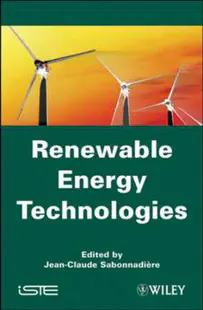Course Info
Course materials are available at FESB MERLIN.
Course Objectives
Training students for:
- Understanding the specifics related to the working principles and operating characteristics of renewable energy sources as well as project financing options
- Implementation of a legislative framework that promotes production from RES
- Assessment of the annual energy potential for various types of RES
- Selection of the optimal parameters and project solutions for different RES
- Analysis of network conditions after connection of RES
Course content
- Overview of the current state of Croatian power system and guidelines for further development. Review of the EU energy policy guidelines. Overview of the legal framework for eligible producers of electricity and incentive methods.
- Wind power plants: wind energy, wind turbine types, generators types, other parts of the wind turbines, internal network design and grid connection, onshore and off*shore plants, production control, wind forecasting…
- Photovoltaic power plants: solar radiation, calculation of solar radiation on a tilted surface, the basic structure and working principle of solar cells, characteristic parameters of solar cells and their temperature and irradiation dependence, different types of photovoltaic modules, other components of standalone and grid connected PV system, connection to the electricity network, sizing of an autonomous system, …
- Solar thermal power plants: basic design and operating principles, sun tracking system, solar heating and passive architecture
- Small hydro power plants: different types of HPP and hydro turbines, hydro turbine selection, calculation of electricity generation, other parts of small HPP, the environment impact, ..
- Biomass: different type of biomass, energy crops, process and environmental aspects of the production of bioethanol / biodiesel, wood biomass, biogas production and landfill gas, ….
- Geothermal power plants: selection of suitable locations, types of geothermal energy, direct use of heat energy, different means of electricity production, heat pumps, …
- Marine and ocean energy: tidal power, power plants on ocean currents, wave energy converters, ocean thermal energy converters, operating principles, site selection, energy potential, …
- The variability of RES production and the impact on power system regulation reserves. Technical conditions for connecting RES to the power system.
- Profitability analysis for RES
- Energy storage technologies: pumped hydro storage, compressed air storage, flywheels, electrochemical storage technologies,…, the role of electricity storage in modern power systems, the ability to provide ancillary services to power system, …
List of laboratory or design exercises
- Technical visit to roof mounted PV power plant
- Technical visit to wind power plant
- Introduction to software package Homer
- Project assignment regarding standalone and grid connected system design and profitability calculation
- Project assignment regarding solar collector system design and profitability analysis
- Techno-economic analysis of investment in PV power plant
- Analysis of RES connection impacts on power losses and voltage profile change in the MV distribution network
Course Literature
- L. Freris, D.Infield: Renewable Energy in Power Systems, Wiley, 2008
- T. Ackerman: Wind Power in Power Systems, Wiley, 2012.
- J. Twidell, T. Weir: Renewable Energy Resources, Taylor & Francis, 2005.
